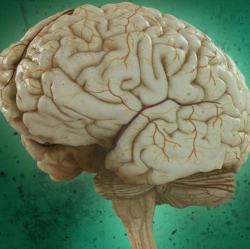
Researchers have created the first “Alzheimer’s-in-a-dish”: a 3D petri dish capable of reproducing the events underlying the development of the disease. Alzheimer’s has been thought to result from the buildup of plaque formed by the beta-amyloid protein and from another protein, tau, which entangles neurons.
The new research provides the first clear evidence supporting the hypothesis that deposition of beta-amyloid plaques in the brain is in fact the first step in a cascade leading to the devastating neurodegenerative disease, the researchers say. The research also identified the essential role in that process of a specific enzyme that could be a therapeutic target.
“Originally put forth in the mid-1980s, the amyloid hypothesis maintained that beta-amyloid deposits in the brain set off all subsequent events, the neurofibrillary tangles that choke the insides of neurons, neuronal cell death, and inflammation leading to a vicious cycle of massive cell death,” says Rudolph Tanzi, PhD, director of the MGH Genetics and Aging Research Unit and co-senior author of the report in Nature.
